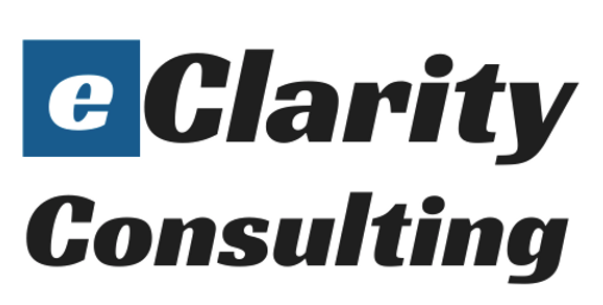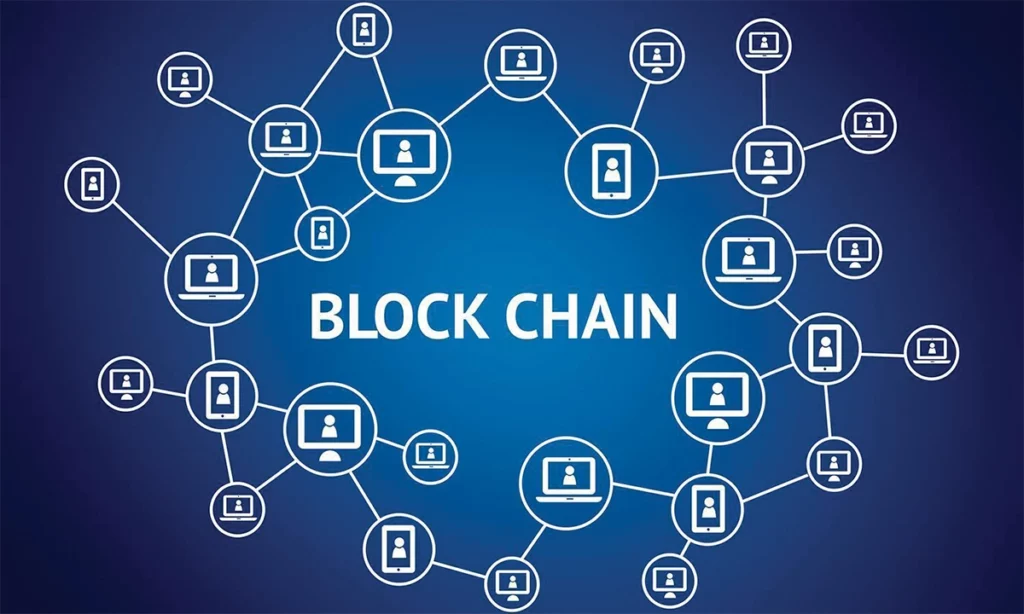The blockchain narrative, once steeped in promises of revolutionary disruption, decentralization, and unprecedented transparency, has begun to face a stark reality check. While the technology’s potential remains a subject of intense interest, its practical impact has fallen short of its initial, lofty claims. This article examines the dichotomy between blockchain’s aspirational goals and its present-day achievements, exploring the challenges and limitations alongside the areas where it has shown genuine promise. We’ll also delve into the debate surrounding cryptocurrencies, assessing whether they have moved beyond being speculative digital assets and discuss the complex issues arising around both the blockchain technology and cryptocurrencies.
The Unfulfilled Promise: Examining the Gap Between Vision and Reality
The foundational premise of blockchain – decentralized, transparent, and disruptive – has faced significant hurdles in its execution.
- Decentralization’s Dilemma: One of the most appealing aspects of blockchain was its promise of decentralization, eliminating the power of centralized authorities. The reality, however, is that many blockchain networks, particularly in proof-of-work systems, have seen a significant concentration of power. Bitcoin and Ethereum, for example, have mining activities largely controlled by a small number of entities, which raises questions about the true extent of decentralization [1]. Even proof-of-stake systems, designed to address this imbalance, are not immune to power concentration among the largest stakeholders. The promise of a truly democratic and distributed ledger remains elusive.
- Transparency’s Nuances: The transparent, immutable nature of blockchain ledgers has been touted as a significant advantage. While transactions are indeed publicly visible, the use of pseudonymous addresses and sophisticated privacy coins like Monero and Zcash make it challenging to trace the identities of participants, effectively limiting transparency in certain applications [2]. Furthermore, the sheer complexity of blockchain technology allows for sophisticated users to potentially manipulate the system and obfuscate financial flows, demonstrating the limitations of total transparency in the real world.
- Disruption’s Delayed Arrival: The vision of blockchain disrupting entire industries, from finance to supply chains and voting systems, has yet to materialize on a large scale. While the technology has shown potential in various sectors, many applications remain in the experimental stage, and few have gained widespread adoption. For instance, supply chain management and e-voting systems have seen promising pilot programs, but mainstream implementation has been slow, hampered by technical hurdles, cost considerations, and inertia.
- Scalability Challenges: The scalability of blockchain networks has been a persistent issue. The inability to handle high volumes of transactions has led to network congestion, particularly on popular platforms like Ethereum, hindering performance and hindering the technology’s ability to handle mainstream adoption [3]. While Layer-2 solutions like the Lightning Network and Polygon are designed to address these limitations, the problem remains a significant obstacle to the technology’s broad application.
- Cost Barriers: High transaction costs, often referred to as “gas fees,” are another significant barrier, making smaller-value transactions prohibitively expensive on many blockchains. For example, the high gas fees associated with non-fungible tokens (NFTs) and decentralized finance (DeFi) transactions on Ethereum have created a barrier to entry for many users, limiting wider accessibility [4].
Cryptocurrencies: Beyond the Speculative Frenzy
The valuation of cryptocurrencies presents a significant challenge. The dominant argument is that they lack intrinsic value; they are digital assets, often not backed by any tangible resource or commodity. Unlike traditional fiat currencies or commodities that are typically supported by a government, or use value, many cryptocurrencies are entirely dependent on market sentiment and trading activity for their valuation. This makes the market extremely volatile.
- Volatility and the Speculative Cycle: The extreme price fluctuations of many cryptocurrencies demonstrate the high degree of speculation that dominates the market. The volatile nature can be driven by various factors such as social media hype, celebrity endorsements, and general market sentiment, creating significant risk for retail investors [5]. Many cryptocurrencies, especially “meme coins,” have risen and fallen rapidly, leaving many investors with losses and demonstrating the dangers of speculative investment strategies that are prevalent in the market.
- Limited Real-World Utility: Beyond speculation, the actual utility of cryptocurrencies as a medium of exchange remains limited. While there are use cases such as cross-border remittances, and transactions in countries facing financial instability, the overall adoption as a means of payment in everyday life has not been widespread. Even in these scenarios, the volatility and lack of regulatory oversight can hinder mainstream acceptance.
- Regulatory Uncertainty: The lack of consistent regulatory frameworks for cryptocurrencies creates uncertainty and risk for both investors and the broader financial system. The absence of clear regulations creates a fertile ground for market manipulation, illicit activities, and potential financial instability. Governments are grappling with the task of balancing innovation with investor protection and preventing criminal activity, but regulatory frameworks and processes lag behind the growth and evolution of crypto markets.
Blockchain’s Success Stories: Glimmers of Potential
Despite the challenges, blockchain technology has demonstrated some genuine successes in specific areas:
- Supply Chain Transparency: The use of blockchain for tracking goods and materials in supply chains has improved transparency and traceability. Initiatives like IBM Food Trust are enhancing accountability by tracking produce, ingredients, and other goods, making the origin and path of various items more transparent [6].
- Secure Data Storage and Medical Records: The use of blockchain for secure data storage shows promise. Medical records can be stored in a more secure and private manner, enhancing patient privacy, while giving users more control over access.
- Intellectual Property and Provenance: Blockchain has also demonstrated potential in managing intellectual property, tracking ownership, and tracing the provenance of both digital and physical assets. NFTs, while also a space subject to hype, are demonstrating some applications in digital art marketplaces and in the tracking of luxury goods [7]. However, it is essential to acknowledge the ongoing problems of copyright, scams, fraud, and intellectual property using NFTs.
- Voting Systems: Some organisations and countries have experimented with blockchain voting systems to increase transparency and auditability of votes. These are often limited scale and require further development.
Blockchain’s Failure Stories: Lessons from Setbacks
Alongside successes, blockchain has also been marked by significant failures that serve as important cautionary tales:
- The ASX CHESS Replacement Fiasco: The failed attempt by the Australian Securities Exchange (ASX) to replace its Clearing House Electronic Subregister System (CHESS) using blockchain technology stands out as a cautionary example. The project’s massive cost overruns, delays, and eventual cancellation highlight the complexity and risks associated with large-scale blockchain implementation [8]. It underscores the importance of careful planning, technical feasibility assessments, and rigorous risk management.
- The ICO Bubble: The numerous Initial Coin Offerings (ICOs) from 2017/2018 are a stark reminder of the dangers of overhyped fundraising models. Many ICOs raised significant capital based on overly optimistic promises and subsequently failed, leaving many investors with large losses [9]. These failures highlight the need for greater due diligence, transparency, and accountability in the cryptocurrency space.
- DAO Governance Issues: The concept of Decentralized Autonomous Organizations (DAOs) has also been challenged by governance issues and technical vulnerabilities. Incidents of internal conflicts, lack of cohesion, and security vulnerabilities have plagued several DAOs, showcasing the difficulties in building robust and decentralized governance systems [10].
Future Outlook: Towards Practicality and Sustainable Growth
Looking ahead, the future of blockchain and cryptocurrencies will likely be characterized by a move from idealistic visions to practical and targeted applications. We’re unlikely to see a complete overhaul of all industries via blockchain. Instead, growth will be focused on specific use cases where blockchain offers genuine advantages in efficiency, security, or transparency. This includes supply chain management, digital identity, and secure data storage solutions. Private and permissioned blockchains will likely play a more significant role, allowing organisations to benefit from blockchain technology while maintaining greater control and security. Layer-2 scaling solutions will be essential for improving transaction speeds and reducing fees, making complex and high volume blockchain applications more viable. Regulatory clarity will be crucial for reducing uncertainty, increasing institutional adoption, and fostering a more stable market environment. Interoperability will also be a key focus, connecting different blockchain networks to enable data and asset transfers. Furthermore, as the Web3 ecosystem develops there will be an increasing focus on business models, use cases and methods of communication and engagement.
While mainstream adoption of cryptocurrencies as daily currencies may take time, they will continue to play a role in niche areas, especially in cross-border payments, and in financial inclusion, with institutions looking to utilise crypto assets within their traditional offerings. Finally, there will be an increasing focus on a more sustainable approach to blockchain development, including addressing environmental concerns and promoting ethical practices. This will be key to ensuring long term success and long term public support for the technologies.
Conclusion: A Call for Realistic Assessment
In conclusion, blockchain technology and cryptocurrencies are currently undergoing a reality check. While the hype surrounding them has been significant, it is essential to approach their evaluation with a critical eye. While blockchain technology offers valuable potential in certain areas, it has not yet lived up to its broader transformative promises. It’s crucial for investors and regulators to focus on tangible benefits, rather than speculative hype. The promise of decentralization has to be addressed; issues of scalability and costs need to be overcome. Cryptocurrency will need to find a path beyond speculation to be widely adopted. As these technologies evolve, it is imperative to develop frameworks that balance innovation with responsible and sustainable practices, focusing on delivering real value to users and the broader society. A critical approach is key for the future development and adoption of blockchain and cryptocurrency technologies.
Appendix: Understanding Web3 – A Layperson’s Guide
You might have heard the term “Web3” thrown around, often alongside blockchain and cryptocurrencies. It’s a concept that aims to reshape the internet as we know it, but it can be confusing. Here’s a simple explanation:
What is Web3?
Imagine the internet as a series of evolving phases.
- Web1 (The Early Internet): This was the “read-only” web. Think of static websites where users primarily consumed information. It was like reading a digital newspaper. There was limited interaction, and websites were mainly controlled by their owners.
- Web2 (The Social Web): This is the internet we use today. It’s characterized by interactive platforms, social media, and user-generated content. We can create and share things, but these platforms are mostly controlled by large companies like Google, Facebook, and Twitter. These companies collect and use our data.
- Web3 (The Decentralized Web): Web3 is an attempt to create a more decentralized and user-centric internet, where control is not concentrated in the hands of large corporations. It aims to give more power to users and creators, shifting from a “read/write” to a “read/write/own” model.
Key Ideas Behind Web3:
- Decentralization: Instead of relying on a few central servers and companies, Web3 aims to distribute power across a network of users. This is often achieved using blockchain technology.
- Blockchain Technology: This acts like a shared, transparent, and tamper-proof digital ledger. This is important for keeping track of ownership and transactions without relying on intermediaries.
- User Ownership: In Web3, users are meant to have more control over their data and digital assets. They can “own” their online identities, content, and even parts of platforms, rather than just using them.
- Cryptocurrencies and Tokens: Cryptocurrencies and tokens are used to reward participation and govern networks, allowing users to vote on decisions and potentially share in the profits of platforms they help build.
- Semantic Web: Web3 aims to make the web more interconnected and intelligent using semantic technology to allow machines to understand data, not just display it.
How Does Web3 Differ from Web2?
| Feature | Web2 (Current Internet) | Web3 (Proposed Future) |
| Control | Centralized (Large corporations control platforms) | Decentralized (Power distributed among users) |
| Data | Companies collect and control user data | Users have greater control over their data |
| Ownership | Users don’t own their data or digital assets | Users own their data and digital assets (via tokens) |
| Access | Mostly free, but platforms can limit access | More permissionless and open access |
| Monetization | Platforms monetize user data and content | Creators can directly monetize their content via tokens |
Examples of Web3 Concepts:
- Decentralized Social Media: Imagine a social media platform where you own your content and control your data. No company can censor you or sell your information.
- Decentralized Finance (DeFi): This aims to build financial services (lending, borrowing, trading) without intermediaries like banks. Instead, transactions are recorded on a blockchain.
- Non-Fungible Tokens (NFTs): These digital tokens represent unique digital assets like artwork, collectibles, or even real estate deeds, giving creators and owners more control and provenance tracking.
- Decentralized Autonomous Organizations (DAOs): These are communities that are run by their users, using smart contracts to automate governance decisions.
- Metaverse: Web3 will play a critical role in the development of the metaverse, enabling digital ownership and the development of decentralised worlds and economies.
What Does Web3 Mean for You?
In the future, Web3 could mean:
- More Privacy: Better control over your personal data and less reliance on large corporations.
- More Ownership: The ability to own your digital creations and potentially profit from them without intermediaries.
- More Control: A greater say in how platforms and online communities are governed.
- More Transparency: More visibility into how data and transactions are managed.
Challenges and Considerations:
- Complexity: Web3 technologies are often complex, and the user experience needs to improve for mainstream adoption.
- Scalability: Many blockchain networks struggle to handle a large number of users and transactions.
- Security: Security vulnerabilities and hacks remain a challenge.
- Regulation: Clear and effective regulations are needed to protect users and prevent illicit activities.
- Real World Use: Many web3 initiatives are early stage and more development is needed to determine what is practical for widespread use.
In Summary:
Web3 represents an ambitious vision for a more decentralized, user-centric internet. While it’s still in its early stages, it has the potential to transform how we interact with the digital world. It’s a significant shift from the current model and will take time for mass adoption, however it’s a space to keep an eye on as it continues to evolve.
Appendix: Understanding Decentralized Autonomous Organizations (DAOs) – A Layperson’s Guide
You may have encountered the term “DAO” when learning about blockchain and Web3. DAOs are a novel type of organization that’s gaining traction, but they can seem a bit complicated at first. Here’s a simple breakdown:
What is a DAO?
Think of a DAO as an internet-native organization that is collectively owned and managed by its members, without a central authority. Unlike traditional organizations with a hierarchical structure (like companies or charities), DAOs operate based on rules written into smart contracts on a blockchain. This code governs the organization and its decisions.
Here’s a simplified comparison:
- Traditional Organization:
- Has a hierarchical structure (CEO, managers, employees).
- Decisions made by a board or a small group of leaders.
- Rules and policies often set by an upper leadership team.
- Relies on trust in individuals to make decisions.
- Decentralized Autonomous Organization (DAO):
- Operates with a flat structure, with shared ownership and management.
- Decisions are made collectively through a voting process.
- Rules are encoded in smart contracts (code on the blockchain).
- Relies on the transparent and auditable nature of blockchain and code.
Key Characteristics of a DAO:
- Decentralized: Power is distributed among members, not held by a single authority.
- Autonomous: Operates automatically based on its smart contracts; no one can manipulate the rules.
- Transparent: All rules, decisions, and transactions are recorded on the blockchain and visible to everyone, promoting trust and accountability.
- Community-Driven: Decisions are made by the DAO’s members through a voting process.
- Token-Based: Members usually have to hold a specific cryptocurrency or token to participate in governance and voting.
How Do DAOs Work?
- Smart Contracts: The rules of the DAO are encoded in smart contracts on a blockchain. These smart contracts dictate how the organization functions, how funds are managed, and how decisions are made.
- Membership: To participate in a DAO, you typically need to purchase or earn a specific governance token. This token grants you the right to vote and influence the organization.
- Governance: Members propose changes or initiatives, and the community votes on them. Proposals that meet a certain threshold are automatically executed by the smart contracts. The smart contract handles the rules of voting such as, how much voting power a member has, as well as the mechanisms for decision making.
- Treasury: The funds of a DAO are usually stored in a digital “treasury” that is controlled by the smart contracts, not a central entity.
- Transparency: All actions, votes, and transactions within a DAO are transparently recorded on the blockchain, making it harder for corruption to occur.
Examples of DAOs:
- Investment DAOs: Pool funds and invest in assets chosen by the community via votes.
- Social DAOs: Connect individuals with shared interests (e.g., art, music, gaming) and allow them to make collaborative decisions.
- Grant-Giving DAOs: Distribute funds for research, social causes, or other projects proposed by members.
- Protocol DAOs: Govern decentralized platforms or protocols.
- Media DAOs: Aim to create and curate content controlled by the community.
Potential Benefits of DAOs:
- Transparency and Accountability: All actions are visible on the blockchain, promoting trust and reducing the risk of corruption.
- Democratized Governance: Members have a voice in decisions, not just a select few.
- Global Participation: Individuals from anywhere can participate in a DAO.
- Community-Driven Innovation: DAOs can enable collaborative development and innovation.
Challenges and Considerations:
- Complexity: Understanding and managing a DAO can be complex for many individuals.
- Governance Challenges: Effective decision-making and avoiding internal conflicts can be difficult in a decentralized system.
- Security Risks: Smart contracts are not immune to vulnerabilities, which can lead to hacks and the loss of funds.
- Regulatory Uncertainty: DAOs operate in a regulatory gray area, and their legal status can be unclear.
- Lack of Real World Use: Many DAOs are experimental in nature and not widely adopted.
In Summary:
DAOs represent a novel and innovative approach to organization and community governance. They utilize blockchain and smart contracts to foster transparency, decentralization, and community-driven decision making. While still in their early stages, they have the potential to transform how groups of people collaborate and govern themselves in the digital age. As the technology matures, it is important to understand both the benefits and the challenges involved in the operation of a decentralized autonomous organisation.
Glossary of Terms
This glossary provides definitions for key terms used in the article on blockchain and cryptocurrencies.
- Blockchain: A decentralized, distributed, and often public digital ledger consisting of “blocks” of data linked together using cryptography. It’s designed to be transparent, secure, and immutable (unchangeable).
- Cryptocurrency: A digital or virtual currency secured by cryptography, often using blockchain technology. Examples include Bitcoin, Ethereum, and many others.
- Decentralization: The distribution of power or control away from a central authority to a network of participants. In the context of blockchain, it means that no single entity controls the network.
- Decentralized Autonomous Organization (DAO): An organization or community governed by code, not by traditional hierarchies. Decisions are made based on rules encoded in smart contracts and voted on by members.
- Decentralized Finance (DeFi): Financial services and applications (lending, borrowing, trading) built on blockchain technology, aiming to remove traditional financial intermediaries like banks.
- Ethereum: A popular open-source blockchain platform that allows the creation of smart contracts and decentralized applications (dApps).
- Fiat Currency: A government-issued currency (like the US dollar, Australian dollar, or euro) that is not backed by a physical commodity like gold but is instead backed by the issuing government.
- Gas Fees: Transaction fees charged on some blockchain networks, particularly Ethereum, for using the network’s resources. These fees can fluctuate significantly.
- Immutable: Something that cannot be changed or altered. In the context of blockchain, once data is recorded on the ledger, it cannot be deleted or modified.
- Interoperability: The ability of different blockchain networks to communicate and interact with each other, sharing data and assets seamlessly.
- Initial Coin Offering (ICO): A method of fundraising used by blockchain projects, where new cryptocurrencies or tokens are sold to the public.
- Layer-2 Solutions: Protocols or technologies built on top of existing blockchain networks to improve their scalability and efficiency by processing transactions off-chain. Examples include the Lightning Network and Polygon.
- NFT (Non-Fungible Token): A unique digital asset represented on a blockchain, each with its own unique properties. NFTs can represent anything from artwork and collectibles to real estate deeds.
- Permissioned Blockchain: A blockchain network that requires specific authorization to participate, often used in enterprise settings where control is a priority.
- Permissionless Blockchain: A blockchain network that is open for anyone to participate in without requiring permission or authorization.
- Proof-of-Stake (PoS): A consensus mechanism where validators are chosen to create new blocks based on the amount of cryptocurrency they hold and “stake” in the network. It is generally considered more energy-efficient than Proof-of-Work.
- Proof-of-Work (PoW): A consensus mechanism where miners compete to solve complex computational puzzles to validate transactions and add new blocks to the blockchain. It is typically more energy intensive.
- Private Blockchain: A blockchain network where access and permissions are controlled by a single entity.
- Public Blockchain: A blockchain network where the ledger is open and available for anyone to view and interact with.
- Scalability: The ability of a blockchain network to handle an increasing number of transactions without compromising performance or security.
- Semantic Web: A web in which the meaning of data is understood, not just its presentation. It allows machines to understand data better than they do today and is designed to make the internet more intelligent and interconnected.
- Smart Contract: Self-executing contracts with the terms of the agreement written in code. Smart contracts automatically enforce agreements once specific conditions are met.
- Stablecoin: A cryptocurrency designed to maintain a stable value relative to a traditional currency (like the US dollar) or a commodity.
- Token: A digital asset issued on a blockchain, often representing ownership or utility within a particular network or project.
- Web1: The first generation of the internet, characterized by static websites with limited user interaction.
- Web2: The second generation of the internet, characterized by interactive social platforms and user-generated content.
- Web3: The proposed third generation of the internet, focused on decentralization, user ownership, and blockchain technology. It aims for a more user centric internet where individuals are in control of their data and digital assets.
Endnotes:
[1] Zhang, X., & Lin, X. (2019). Analysis of the Decentralization Level of Cryptocurrency Based on Its Transaction Network. 2019 IEEE International Conference on Information and Automation (ICIA), 1098-1103.
[2] Möser, M., Böhme, R., & Breuker, D. (2013). Anonymity in Bitcoin. In Security and Privacy in Social Networks (pp. 121-143). Springer, New York, NY.
[3] Croman, K., Decker, C., Eyal, I., Gencer, A. E., Juels, A., Kosba, A., … & Sirer, E. G. (2016). On Scaling Decentralized Blockchains. International Conference on Financial Cryptography and Data Security, 106-125.
[4] Wang, D., Zhang, Y., & Xu, J. (2021). An Empirical Study of Gas Fees in Ethereum. 2021 IEEE International Conference on Decentralized Applications and Technologies (DECAT), 5-12.
[5] Urquhart, A. (2020). The Impact of Social Media on Cryptocurrency Prices. International Journal of Financial Studies, 8(3), 43.
[6] IBM. (n.d.). IBM Food Trust. Retrieved from https://www.ibm.com/blockchain/solutions/food-trust
[7] Nakamoto, S. (2008). Bitcoin: A Peer-to-Peer Electronic Cash System.
[8] ASX. (n.d.). CHESS Replacement. Retrieved from https://www.asx.com.au/services/chess-replacement.htm
[9] Catalini, C., & Gans, J. S. (2020). Initial Coin Offerings and the Value of Tokens. International Journal of Industrial Organization, 69, 102528.
[10] Hsieh, Y. H., & Vergne, J. P. (2021). DAO: Governance and Organization in the Era of Blockchain. Journal of Organization Design, 10(1), 1-21.














